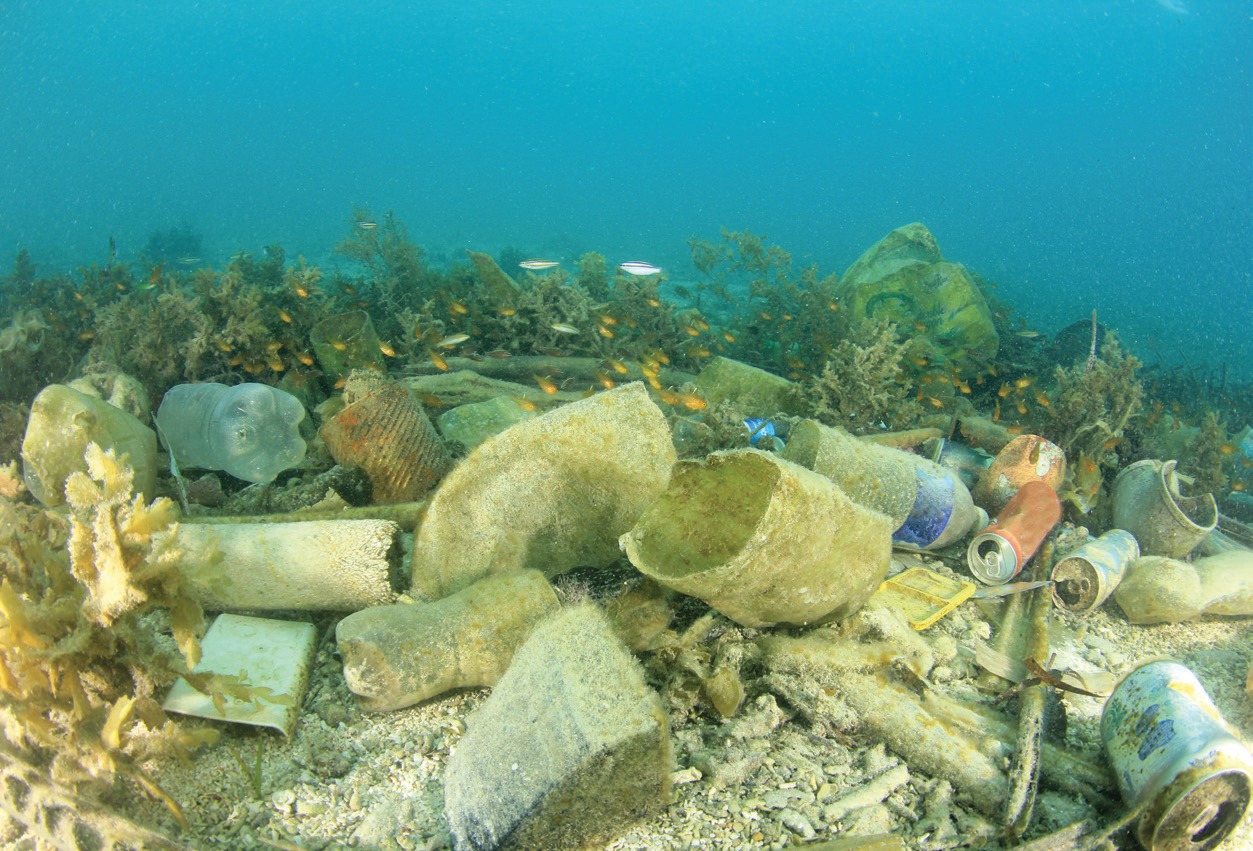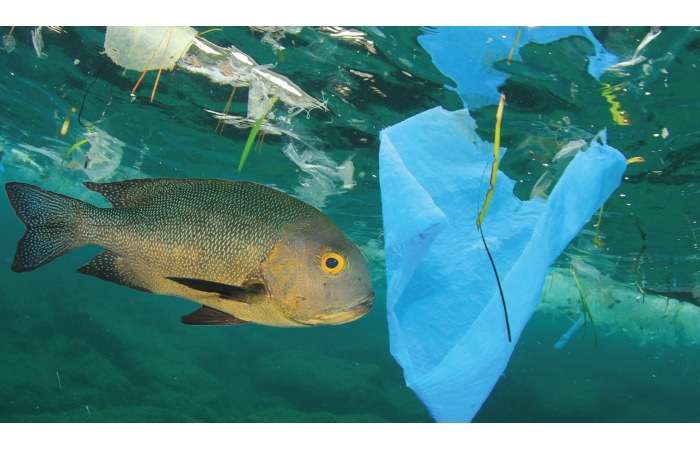At the end of last year, the Ellen MacArthur Foundation published a game-changing report about how packaging can up its game to reduce upstream plastic pollution. In support of that release, Sara Wingstrand, innovation programme manager at the foundation, spoke to Matthew Rogerson about the report’s key findings, and how it can really help companies take successful sustainability steps towards a circular economy.

In November 2020, the Ellen MacArthur Foundation published ‘Upstream innovation: A guide to packaging solutions, a practical guide to eliminating plastic pollution through circular economy solutions.’ Filled with case studies, comprehensive supporting assets, workshop toolkit videos and success stories, it is designed to help anyone involved in packaging creation to develop upstream solutions that prevent plastic waste and pollution.
The origins of the report stretch back 18 months, following an article that focused on the reuse of packaging. “Initially, when we were preparing this report, it was as a precursor to a little booklet on reuse,” explains Sara Wingstrand, innovation programme manager at the foundation. “When we published the reuse booklet, we found numerous innovations that we couldn’t include as they were more elimination than reuse. Solid soap for example: there is no reuse element, but it has the impact of designing out the waste.

“This laid the groundwork to concentrate on some of the innovative ways of eliminating waste beginning to emerge. One of the main findings of this publication is how it’s not just about eliminating multipacks, multibuys and excessive packaging, [but] where you look at the key functionality of the packaging, and how can you then achieve that functionality in a fundamentally different way.”
This, ultimately, led to the discovery that, by rethinking the packaging of the product, or the business model, it would be possible to innovate ways to reduce waste from occurring downstream. To illustrate this, Wingstrand gives the example of liquid shampoo. “If you think about the product innovatively, you might make it solid, thus containing itself and not needing packaging. Or, if you have locally sourced supply, perhaps of groceries, you can remove packaging that was needed for longer previous journeys from one part of the world to another. By taking an innovative look at your business model you can significantly reduce or eliminate packaging waste.”
It took the organisation a while to realise there was an innovative component to elimination, a revelation that occurred around the time it set 2025 targets for global packaging.
“In order to achieve these targets around eliminating problematic and unnecessary plastic packaging, moving from single to reuse models, and ultimately making all plastic packaging 100%- reusable, recyclable or compostable,” Wingstrand continues, “we realised we had no time to lose. We felt it imperative to gather everything we had found on all solutions out there – for elimination, reuse and material circulation – and put it into an easy-tofollow guide. We wanted to get people thinking about packaging, product and business models, and how innovating upstream could help make an impact.”
It has been written for a wider audience, not just sustainability departments, so she doesn’t want people to be daunted by its size. “The guide might seem large, but that is simply because there are so many brilliant case studies.” Instead, it has been compiled to be as intuitive as possible, allowing readers to skip to whatever is relevant to them, whether that is examining carbon emissions or resource efficiency or materials – and there are specific tags to help filter searches. It can be used to understand how a change impacted a particular solution, or market, and how it solved a problem. The key has been to make the report as easy to navigate as possible and simple to understand.
Evolution of thought
Wingstrand is keen to stress how the foundation’s mindset changed as it wrote the report. “All the research we did into the case studies really opened our eyes to the fact that you can look at your plastic packaging and say, ‘How do I make it out of a different material to reduce waste?’ Or, ‘How can I design the product differently so there is no waste at all?’ ‘Can I design the business model differently to design out waste?’ And, in fact, this applies not only to elimination but also to reuse and material circulation, like recycling, composting and so on. “You can’t just put packaging on the market and not think about the design. Equally, you have to rethink the product while considering its end-of-life and helping to ensure it can be easily recycled, then ensure these specifications are built into the packaging.
“There is no one way to tackle it – that was what became apparent about the key findings. You might eliminate waste through design, recycling or through a completely different business model. All of them can work, that is the beauty of this process.”
The principle of rethinking a product can also apply to something like recycling, because – crucially – there is an innovative component to the elimination of plastic. The report wanted to showcase successful pilot projects, as beacons of inspiration for prospective replicators.
“We were able to start to understand some of the key ingredients for successful projects,” she says. “Those case studies were now successful first pilots and scaled schemes. It expands the overall pool of solutions that you have. If you only rethink the packaging, when you think about designing out packaging waste, you’re actually leaving out a lot of solutions. By thinking broader, by questioning more fundamentally what you’re doing as a business, it allows you to explore much wider solution space.”

Is there a mindset that companies should have when tackling these issues? Wingstrand highlights the three main motivations. “Eliminating waste from the outset, and rethinking not just the packaging, but the product and the business model. This forms the crucial upstream innovation mindset that we set up. There is a lot more to how to achieve this, and that is why the book is set up for all users.”
Background help
‘For all users’ is key. Wingstrand believes there is no difference depending on where in the value chain someone reading the report is based; indeed, she is very clear that “you need everyone across the supply chain and organisation to be part of a really successful system, but the report does aim to be a reference for checkpoints to succeed, and actually provides actions and steps to help develop a winning upstream innovation process. It provides concrete support about what to put in place in your company that will support your vision and target packaging waste reduction.
“This could include a global commitment to remove problematic and unnecessary plastic packaging, or implementing a reuse model and so on. Go companywide with vision and targets that are translated throughout the business. It is vital not to expect a return on investment tomorrow, but allow the innovation process some leeway to take root and make room for failure. Even failure is a route to success as it will help narrow down future strategies.”
Wingstrand is optimistic about the future, excited about how many paths there are to successfully reducing packaging, and, most importantly, the potential untapped in rethinking the way aspects of capitalism, investment and business practices work. But she also preaches patience. “It will take time for these innovations to have an impact. It is important to promote an entrepreneurial culture internally to rethink and be innovative. It can also help to get external input, and to break down the silos across your organisation – these would be the different key ingredients that kept recurring when we looked at innovation.
“When we have specific deep dives for different companies that were really succeeding in this space, these ingredients would repeatedly appear.”
That is why the report and its latent capacity for instituting change could be so important – particularly in this moment, post-pandemic, where the rules for how charities, corporations and governments work suddenly seems fluid and unrestrained. “We cannot recycle our way out of the plastic pollution crisis,” Wingstrand concludes. “We need to move upstream and look at what is put on the market in the first place so we can eliminate waste, not simply manage it better.
“The circular economy allows us to redesign the entire plastics system to not only overcome the global challenge of plastic pollution, but to do so in a way that allows us to grow prosperity, jobs and resilience, while cutting emissions, waste and pollution. Designers and businesses are at the heart of this transition, and we hope this guide will help them on that journey.”
‘Upstream innovation’ can be downloaded for free on the Ellen MacArthur Foundation website.
